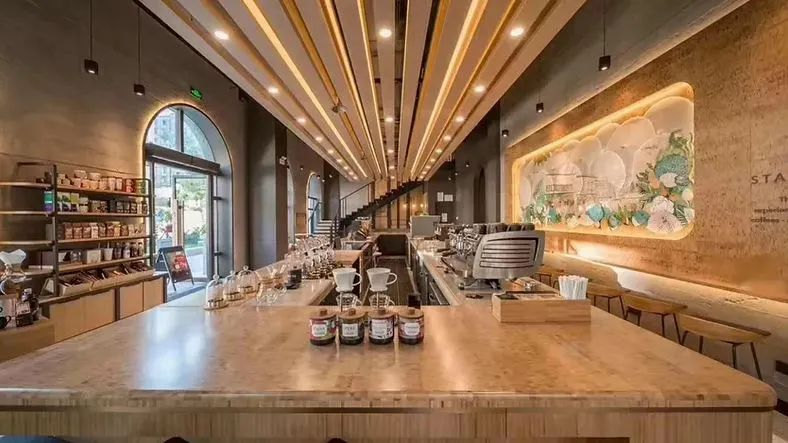Human are born with a closeness to nature, such as the sound of a crackling campfire, the fresh smell of soil after a rain, the affection for plants and animals...... However, with the accelerated pace of urbanization, it seems that we are getting farther and farther away from nature. After realized this, biophilic design becomes a new trend in architecture, and bamboo as a natural material has a unique advantage in such designing trend.
Kempegowda International Airport Bengaluru © Ar. Ekansh Goel/Studio Recall
What's Biophilic Design?
The term "biophilia" is an ancient Greek word and means "love of living things". It was first used by psychologist Eric Fromm in 1964, and then promoted by biologist Edward O Wilson in the 1980s, when he realized that urbanization had led to a disconnect between people and nature, and hoped to evoke human link with nature again. Although the concept of 'biophilia' is still relatively new to the public, it is becoming an emerging trend in architecture and interior design, where we can see many new natural materials and buildings incorporating biophilic design elements.
Six Square House © Alan Tansay
Benefits of Biophilic Design
● Architectural Aesthetics
Biophilic design makes extensive use of natural elements, such as bamboo and wood, plants, water, and natural light, while breaking down the boundaries between indoors and outdoors to create a comfortable and relaxing visual experience and demonstrate architectural aesthetics.
Wyndham Clubhouse © Trieu Chien
● Physical and Mental Health
Biophilic design is beneficial to both physical and mental health.
Roger Ulrich’s shows that plants and natural environment have a positive effect on physical health, which calms the heart rate and lowers blood pressure. Patients recovered faster and required less pain medication in a room with green and natural elements.
Takenaka Clinic © Hiroshi Tanigawa
In terms of mental health, Ulrich’ssuggests that interaction with nature can relieve psychological stress, proote positive emotions and enhance a perception of well-being.
EuroCampus © altPlus
Due to the benefits, biophilic design has become a core component of building verification systems like the Living Building Challenge (LBC).
● Economic Values
Because biophilic design buildings are both aesthetically pleasing and beneficial to people's health, commercial buildings find that natural and comfortable environments attract more customers and have a positive impact on profits. In an economic study on biophilic design, consumers who participated in the survey indicated that they would prefer to pay up to 25% more for the same item in an environment where biological materials, plants, and natural elements can be seen.
That sales could boost by 15-20%. More companies’ choosing biophilic design is not only a sustainable corporate responsibility and commitment, but also a very practical economic choice.
Fuzhou Starbucks © altPlus
6 Principles of Biophilic Design
6 Principles of Biophilic Design © Thermory USA
● Environmental features
Natural elements in architecture, such as biomaterials, water, plants, etc., are some of the most direct methods of biophilic design. Bamboo is a very good choice, but still an underrated biophilic design material.
Bamboo is actually a very fast-growing grass native to tropical, subtropical and temperate climates and is most common in Asia and South America, and as such it can withstand extreme humidity and temperature changes and is resistant to shrinking and swelling.
The engineered bamboo can be used in structure, interiors and exteriors, as well as for furniture and other decorations. Engineered bamboo has excellent structural strength and has natural warm bamboo texture, and is also a carbon sequestering material. Therefore, engineered bamboo is an excellent partner for biophilic design.
Kempegowda International Airport Bengaluru © Ar. Ekansh Goel/Studio Recall
● Natural shapes and forms
Using natural shapes and forms is another important element of biophilic design. These elements include columns, ovals, arches, shells, etc.
Whether unprocessed cylindrical bamboo plants or engineered bamboo, a variety of design requirements in shapes and forms can be met.
Ya'an Dome Design Rendering © altPlus
● Natural patterns and processes
Under this principle, sensory experiences are enriched by transitions and complementary contrasts. The centrality of the architectural design, the overall patterning and the clear boundaries achieve this goal.
Cafe © eiichi kano
● Light and space
Different types of lights are important. The various use of natural light can create a visual sensation in a space that is either cozy, stimulating, or sculptural forms.
Biophilic Office © andyrahman
● Place-based relationship
Place-based relationships focuses on the connection between the architecture and the ecological environment and prominent geographic features (such as mountains, deserts, rivers, and plants), designing and planning the building and the environment as a whole whenever possible.
For example, if a building is located near a bamboo forest, the architect can take the beautiful scenes as advantages. The architect can use engineered bamboo to build a resort or visitor center, so the building can subtly echo the natural features of the place.
Sandiequan Resort © altPlus
● Evolved human-nature relationship
This principle emphasizes the inherent relationship between humans and nature. A good biophilic design can satisfy people's instinct to get closed to nature and live a better life in harmony with nature.
Nowadays, architects and designers bring more "biophilic design" elements into architecture, blurring the boundary between indoor and outdoor, to give people a natural, comfortable and healthy building environment. Bamboo is a natural material, and its structural and decorative characters will be a good way to incorporate biophilic design elements into the design, and assist promote the development of green buildings.














Comments